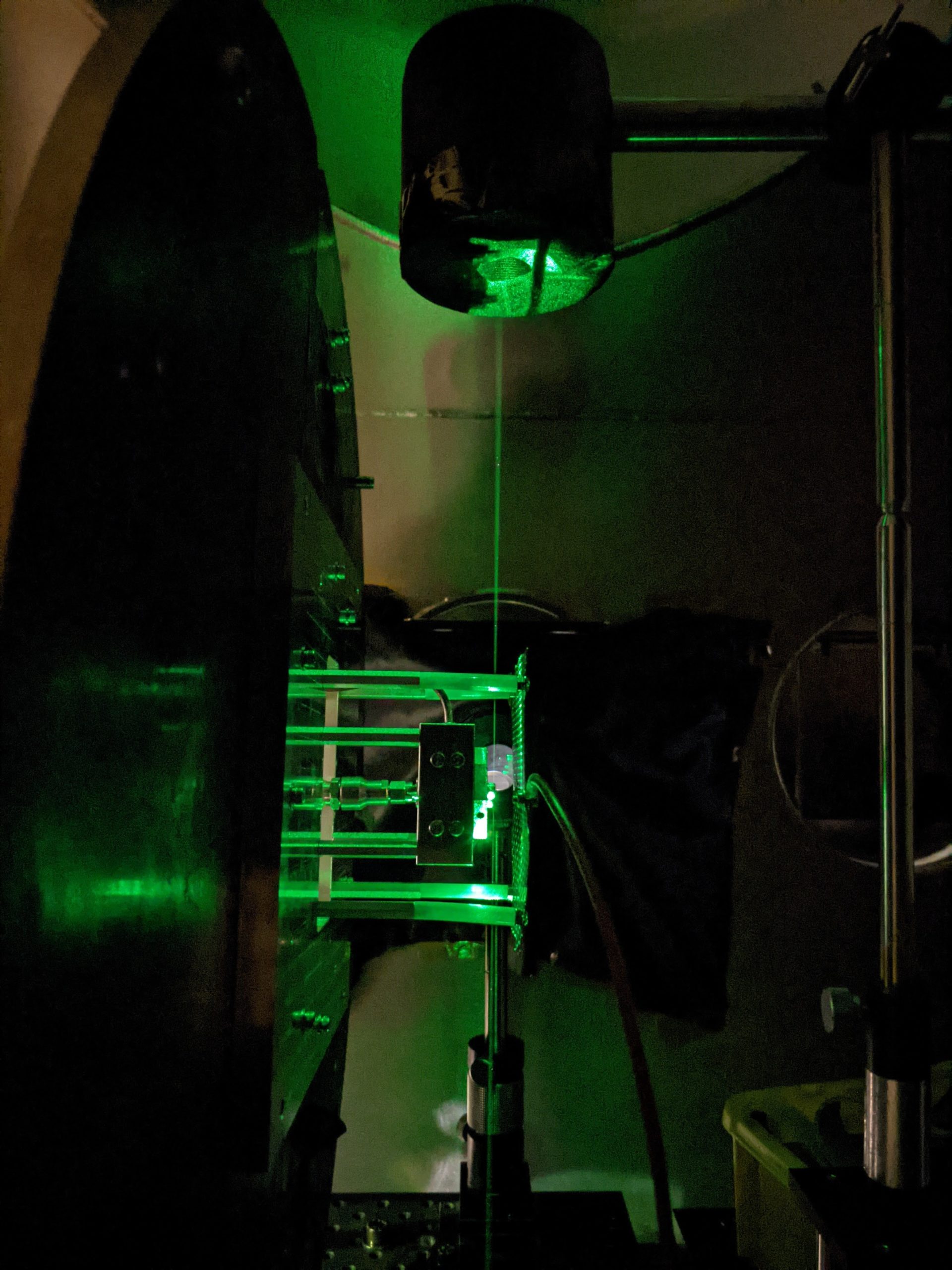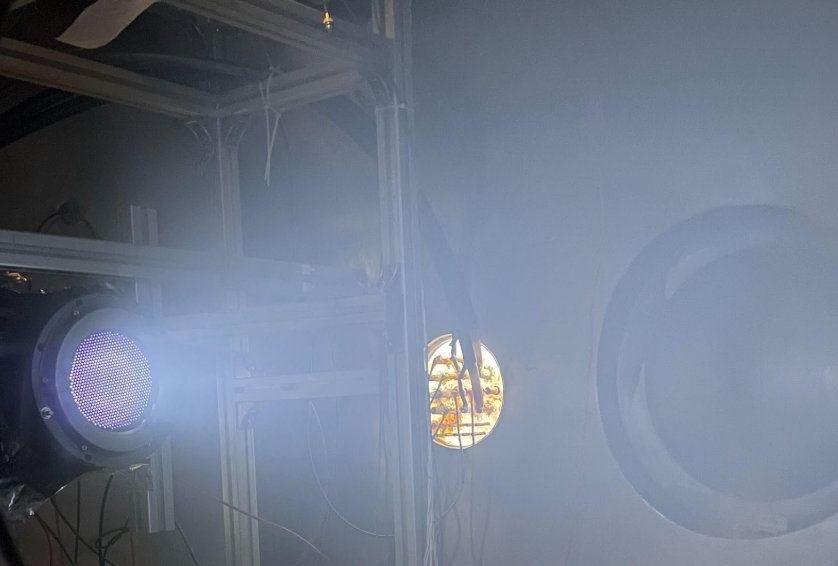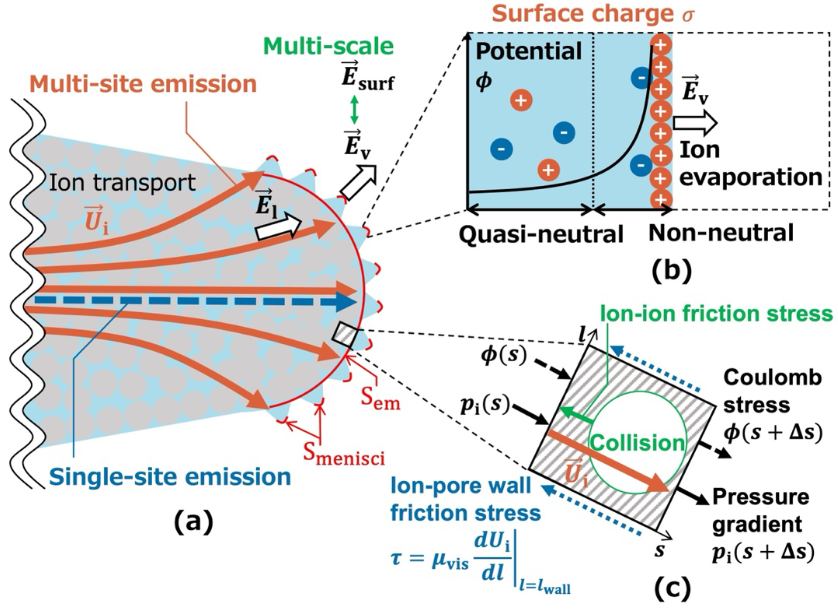Research
Performance improvement and plasma diagnostics of microwave ion thruster
Microwave discharge ion thrusters have been developed by our laboratory, and the 10-cm class thruster is mounted on Japanese asteroid explorer “Hayabusa” and “Hayabusa2”. Usually, the plasma is generated by the thermionic cathode, which is the life-limiter due to spattering. On the other hand, the microwave thruster utilizes the resonance of the microwave and electrons, which contributes to the long lifetime and simple system. For future Japanese space missions, such as the Phaethon flyby mission DESTINY+ and the Solar powered sail mission OKEANOS, we are improving the performance and investigating its related plasma physics by probing, non-intrusive measurement of laser spectroscopy, and numerical simulation.

Plasma Diagnostics
To improve the performance of electric propulsion thrusters and to understand the differences between in-space and ground operation, further research into the plasma dynamics of electric propulsion engines is essential. Microwave discharge ion thrusters and Hall thrusters, which feature low-temperature non-thermal equilibrium plasmas, require the development of novel plasma diagnostics methods to better understand the behavior of electrons, ions, and neutrons. These particles have substantial impacts upon the lifetime and performance of the thruster. In order to measure plasma parameters, our laboratory has developed various laser plasma diagnostic techniques, such as coherent/incoherent laser Thomson scattering, laser absorption spectroscopy, laser-induced fluorescence spectroscopy, and two-photon LIF. Unlike conventional plasma measurement methods, such as Langmuir probes, the laser plasma diagnostic tools do not disrupt the electromagnetic field of the plasma or microwave propagation. Currently, time-average measurements are being developed into time-resolved measurements to understand the instability of plasma. Understanding the behavior of plasma is critical to the development of the new electric propulsion engines that will power humanity’s next mission into space.

Air Breathing Ion Engine
Satellites operating in Very Low Earth Orbit (VLEO), at altitudes below 300 km, offer unique advantages over conventional orbits. VLEO allows for higher-resolution observations and improved signal-to-noise ratio for radar systems. However, satellites in VLEO face significant atmospheric drag due to the presence of rarefied atmospheric particles. To counteract this drag, a propulsion system is essential. Current propulsion systems, which rely on onboard propellant, limit satellite lifetimes to approximately two years due to the rapid depletion of fuel reserves. Our research focuses on addressing this challenge through the development of the Air-Breathing Ion Engine (ABIE). Unlike traditional in-space propulsion systems, ABIE utilizes the surrounding atmospheric particles as propellant, continuously replenishing fuel and enabling long-term operation in VLEO. This innovative approach has the potential to significantly extend the operational lifespan of satellites in these orbits. The goal for ABIE is to compress the rarefied atmosphere and raise the pressure until plasma ignition is possible, generating thrust that compensates for the atmospheric drag. Current research efforts include plasma and thrust measurements based on the μ10 ion engine, as well as numerical simulations of atmospheric flow. Through this research, we aim to enable long-term, sustainable operations in VLEO while advancing the capabilities of Earth observation and communication satellites.

Ionic Liquid Electrospray Thruster
The ionic liquid electrospray thruster is a micro propulsion system with numerous space applications, including micro/nano satellites and exploration probes. This thruster utilizes ionic liquid, a salt that is liquid at room temperature, as its propellant. By applying a high voltage to this propellant, ionized molecules are emitted at high speeds, generating thrust. This method of propulsion is unique among electric propulsion techniques as it does not require the generation of plasma, allowing higher propulsion efficiency than conventional plasma thrusters. Furthermore, by reversing the polarity of the applied voltage, positive and negative ions with almost equal mass can be discharged, eliminating the need for a neutralizer cathode, which plasma-based thrusters require. In our laboratory, a prototype of the ionic liquid electrospray thruster has been developed (as shown in the accompanying figure), and its propulsion performance is under evaluation. Future research will focus on advancing components such as the propellant supply system, conducting durability tests, and refining neutralization mechanisms, with an in-space demonstration as our ultimate goal. This research is being conducted in collaboration with Professor Takao’s Laboratory at Yokohama National University.

.



